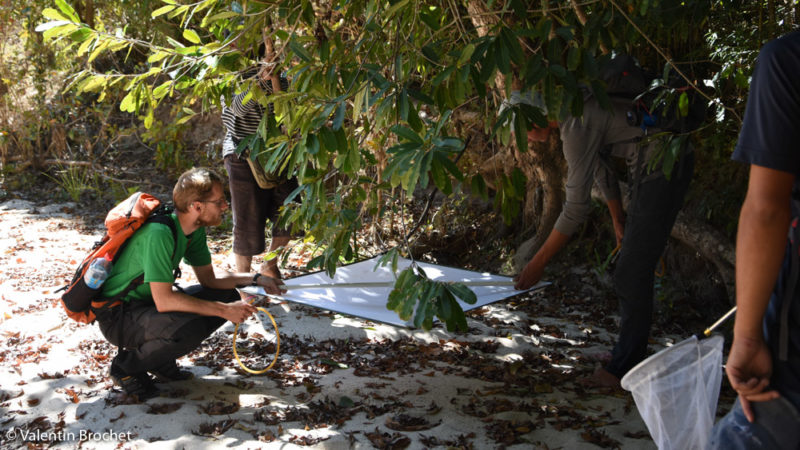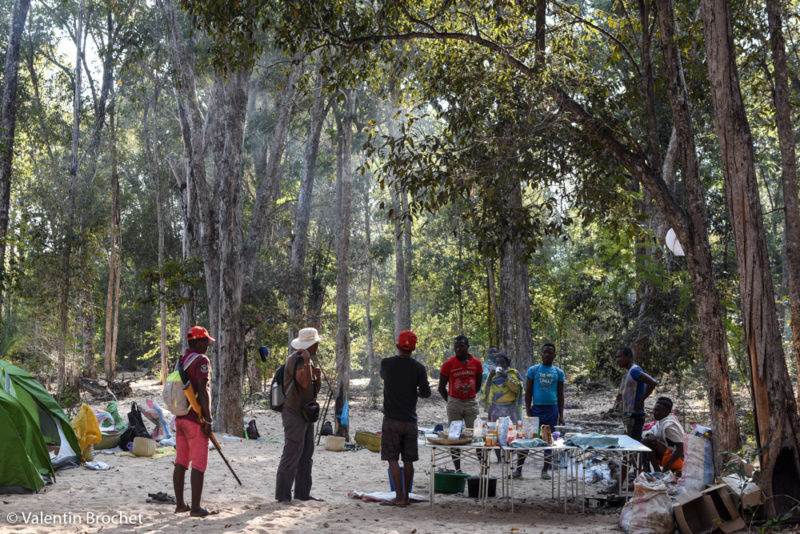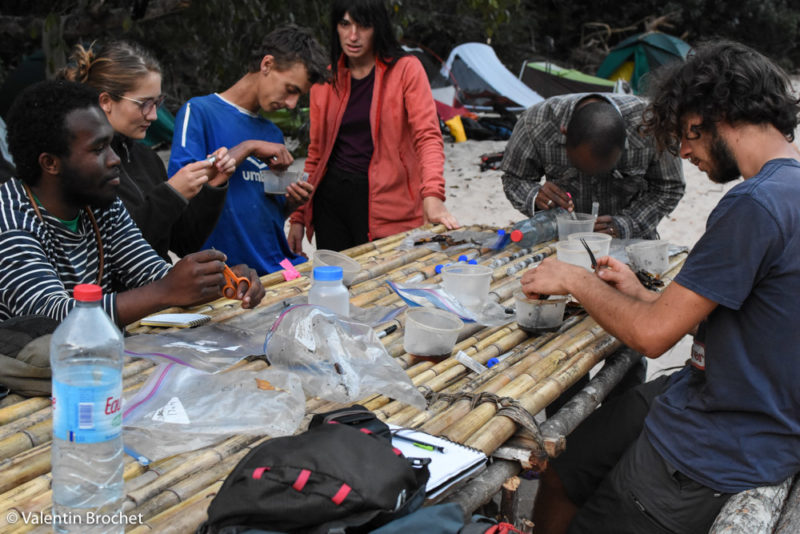Would you like to immerse yourself in the Makay forests?
Support Naturevolution’s efforts to better understand the biodiversity of the Makay and monitor its lemur and bird populations in particular ?
Join one of our participatory science missions!
What do we do?
These missions are aimed at monitoring populations, studying behavior, inventorying the Makay’s flora and fauna, assisting researchers in their research work, improving the Makay’s cartography and carrying out archaeological surveys.
- Lemurs
There are 11 species of lemur in the Makay. We are monitoring populations of Verreaux’s Sifaka (Propithecus verreauxi) and Red-fronted Lemur (Eulemur rufifrons), using transects in the massif’s forests. Night excursions are also organized to observe Microcebus and other nocturnal lemurs. - Reptiles and Amphibians
On all fours in the rivers, we look for amphibians and identify them using the naturalist guides or ecoguards at our disposal. In the forests, we go in search of snakes and chameleons. - Birds
These inventories are carried out on a very regular basis in the massif. Provided we can guarantee that our supervisors are capable of mastering this work and monitoring the protocol over time, capture sessions to monitor individuals over the long term are also proposed. - Insects and other arthropods
We go in search of the Makay’s smallest creatures, which we try to identify and photograph. - Plants
Several studies are planned throughout the year with highly experienced botanists who know Madagascar’s flora inside out. - Mushrooms
We have never carried out a mycological inventory of the Makay. Subject to a meeting/agreement with a specialist in this field, we plan to catch up in this area.

Watch out! These ecovolunteer missions do not have a fixed program defined long in advance, as we adapt to the season, the site and the availability of scientists. Each mission will focus on one or more of the areas listed above.
It should also be pointed out that capture operations – whether for sampling or ringing purposes – are only carried out in the presence of competent scientists with the appropriate permits. Otherwise, our actions remain within the realm of observation and photography, and are therefore non-invasive.
How does the mission work?
These missions take place from a base camp established in the massif. This base camp may be moved once during the mission, but it’s generally fixed to allow us to develop our protocols properly. These missions are supervised by the Naturevolution team and in particular by our eco-guards, who are also the best specialists in the Makay forests. Some missions may also be accompanied by Malagasy and/or international researchers.

What impact will the project have?
Monitoring and inventorying the Makay’s biodiversity are part of the protected area’s management. The aim of these missions is to identify the main taxonomic groups under threat, and then to draw up and implement action plans for their preservation. In this way, science provides clues to the state of health of natural environments, the “services” provided by these ecosystems and their links with local communities.
These missions are complementary to our exploration missions, which aim to visit remote and difficult-to-access areas of the Makay on a more occasional basis, in order to search for rare species or improve our geographical knowledge.

Mission dates
[table “6” not found /]More info and registration
All information about our ecovolunteer missions, including dates and rates, can be found on the Ecovolunteer Missions in Madagascar page. You’ll also find the pre-registration form.

